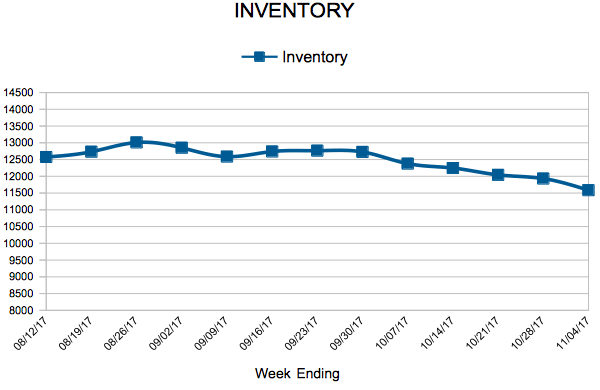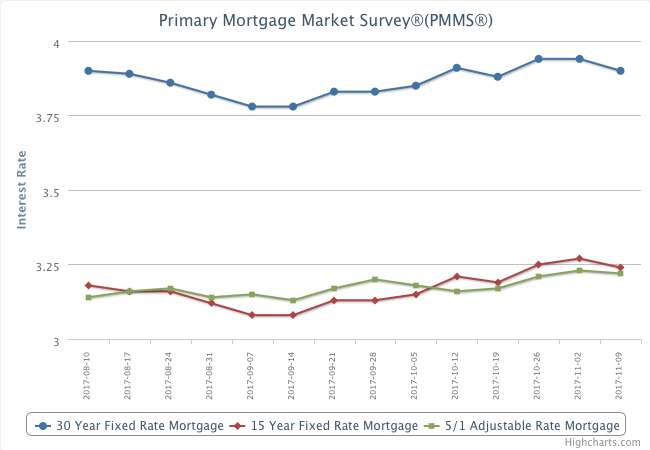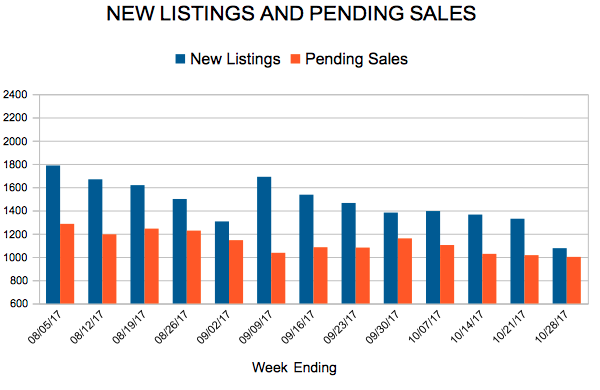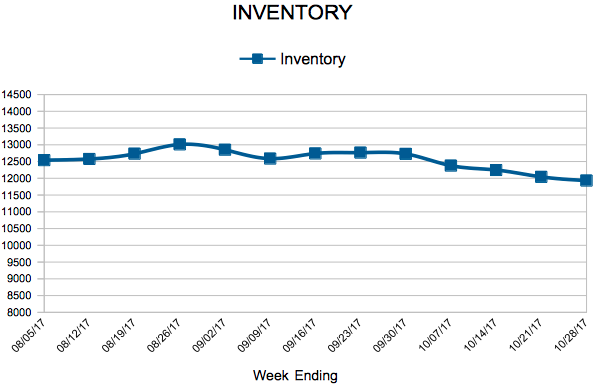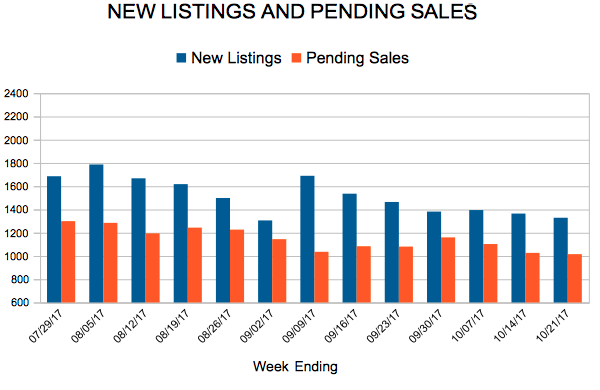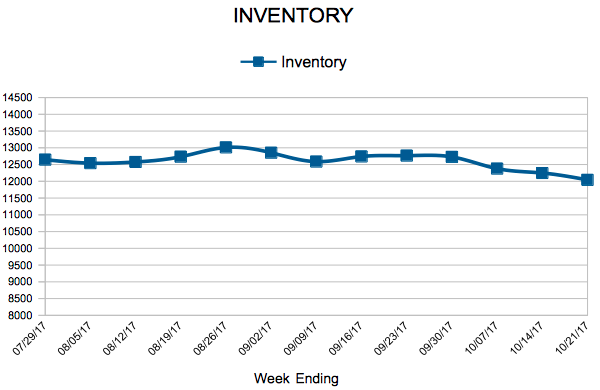Weekly Market Report

For Week Ending November 4, 2017
New tax legislation that could affect the housing market is still currently being discussed and debated by the U.S. Senate and House of Representatives, but it appears that important tools used by homeowners, like the mortgage interest deduction, are in line to continue in some capacity. This continuity would be useful for maintaining a positive outlook for residential real estate.
In the Twin Cities region, for the week ending November 4:
- New Listings decreased 8.7% to 1,017
- Pending Sales increased 0.8% to 1,076
- Inventory decreased 15.3% to 11,585
For the month of September:
- Median Sales Price increased 7.4% to $247,000
- Days on Market decreased 12.3% to 50
- Percent of Original List Price Received increased 0.6% to 98.1%
- Months Supply of Inventory decreased 16.7% to 2.5
All comparisons are to 2016
Click here for the full Weekly Market Activity Report. From The Skinny Blog.
Mortgage Rates Dip Slightly
New Listings and Pending Sales
Inventory
Weekly Market Report

For Week Ending October 28, 2017
The national unemployment rate registered in at 4.1 percent for October 2017. To put that in perspective, joblessness has not been this low in the U.S. since December 2000. In other positive economic news, mortgage rates have been holding steady at or near 3.9 percent. Historically, the average rate has been around 6.0 percent. Factors such as these keep the pool of potential buyers full, even during the so-called off-season of residential real estate sales.
In the Twin Cities region, for the week ending October 28:
- New Listings increased 2.7% to 1,076
- Pending Sales decreased 2.2% to 1,001
- Inventory decreased 16.4% to 11,932
For the month of September:
- Median Sales Price increased 7.4% to $247,000
- Days on Market decreased 12.3% to 50
- Percent of Original List Price Received increased 0.6% to 98.1%
- Months Supply of Inventory decreased 16.7% to 2.5
All comparisons are to 2016
Click here for the full Weekly Market Activity Report. From The Skinny Blog.
Mortgage Rates Hold
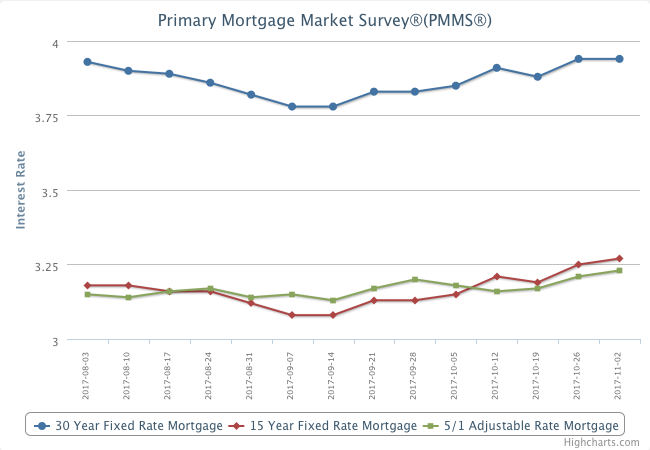
Following a strong surge last week, rates held relatively flat this week. The 30-year mortgage rate remained unchanged at 3.94 percent, while the 10-year Treasury yield dipped roughly 4 basis points. The markets’ reaction to the upcoming announcement of the next Fed chair may impact the movement of rates in next week’s survey.
New Listings and Pending Sales
Inventory
Weekly Market Report

For Week Ending October 21, 2017
The level of real estate activity should subside each week for the remainder of the year. Savvy real estate professionals not only begin to plan now for another successful year next year, but they continue to track the trends to see where prices, listings and other metrics are at relative to last year and all past years of available data. Finding reliable patterns in the trends is a sure way to be of greater service to buyers and sellers. Let’s see where those trends are in our local market.
In the Twin Cities region, for the week ending October 21:
- New Listings increased 10.5% to 1,329
- Pending Sales decreased 4.4% to 1,016
- Inventory decreased 17.7% to 12,042
For the month of September:
- Median Sales Price increased 7.2% to $246,650
- Days on Market decreased 12.3% to 50
- Percent of Original List Price Received increased 0.6% to 98.1%
- Months Supply of Inventory decreased 16.7% to 2.5
All comparisons are to 2016
Click here for the full Weekly Market Activity Report. From The Skinny Blog.
- « Previous Page
- 1
- …
- 101
- 102
- 103
- 104
- 105
- …
- 153
- Next Page »

